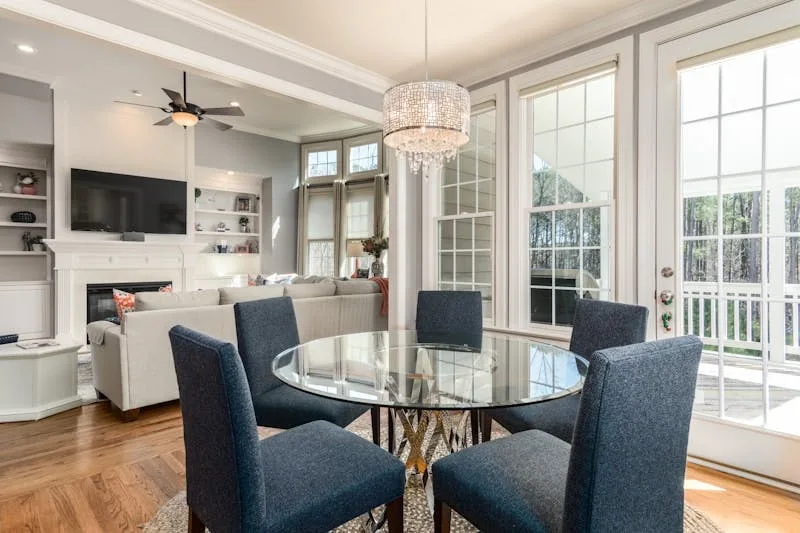Building a home is a complex endeavor, particularly in urban settings where stringent building codes and regulations come into play. For the urban elite, who often seek bespoke, high-end residences, navigating these codes can be a daunting task. This topic is crucial for understanding how to streamline this process, ensuring that construction projects are efficient, compliant, and stress-free. This article explores why it is necessary to understand these strategies, the benefits urban elite residents can gain from this knowledge, how they should implement these strategies, and the consequences of neglecting to do so.
Building codes are essential for ensuring safety, quality, and compliance in residential construction. However, navigating these codes can often be complex and overwhelming for home construction companies, especially in regions with stringent regulations. Simplifying the process of dealing with building codes can lead to smoother project execution, reduced delays, and higher client satisfaction. Here are six powerful strategies that a home construction company can use to simplify building codes and streamline their operations.

1. Develop a Comprehensive Understanding of Local Building Codes
Why It’s Important:
Understanding local building codes is the first step toward compliance. Each region may have specific regulations that can impact various aspects of construction, from structural integrity to fire safety and energy efficiency. Familiarity with these codes helps avoid costly mistakes and ensures that the project meets all legal requirements.
How to Implement It:
Regular Training: Conduct regular training sessions for project managers, architects, and site supervisors to keep them updated on the latest building codes and regulations. This training should cover changes in codes, new compliance requirements, and best practices for implementation.
Code Manuals and Resources: Maintain an up-to-date library of code manuals, guidelines, and resources that employees can refer to during the planning and construction phases. These resources should be easily accessible and include explanations of key regulations.
Local Authorities and Industry Experts: Establish relationships with local building authorities and industry experts. Engage with them to gain insights into code interpretations, upcoming changes, and compliance strategies. This proactive approach can help anticipate and address potential issues before they arise.
2. Integrate Building Code Compliance into the Design Phase
Why It’s Important:
Incorporating building code compliance into the design phase helps prevent the need for costly redesigns and modifications later in the construction process. It ensures that the project is planned with compliance in mind from the outset, reducing delays and maintaining project timelines.
How to Implement It:
Code-Compliant Design Practices: Use design practices that prioritize code compliance. Architects and designers should be well-versed in building codes and incorporate compliance requirements into their designs, such as fire exits, accessibility features, and structural standards.
Pre-Design Meetings: Hold pre-design meetings with all stakeholders, including architects, engineers, and compliance experts, to review code requirements and discuss how they will be integrated into the project design. This collaborative approach ensures that all aspects of the project align with the relevant codes.
Plan Reviews and Audits: Conduct plan reviews and audits to check for code compliance before finalizing designs. These reviews help identify any potential code violations early, allowing for adjustments to be made before construction begins.
3. Utilize Building Information Modeling (BIM) Technology
Why It’s Important:
Building Information Modeling (BIM) is a powerful tool that can streamline the process of ensuring code compliance. BIM allows construction companies to create detailed digital models of the building, incorporating all aspects of the design, construction, and operation. This technology helps visualize and test compliance with building codes in a virtual environment.
How to Implement It:
BIM Software: Invest in BIM software that includes features for checking code compliance. This software can automatically identify areas of the design that may not meet building codes, allowing for quick adjustments.
Collaboration Through BIM: Use BIM to facilitate collaboration between architects, engineers, contractors, and code compliance experts. By working together in a shared digital environment, all parties can ensure that the design adheres to code requirements.
Virtual Simulations: Use BIM to run virtual simulations that test the building's performance against code standards. These simulations can assess factors such as structural integrity, fire safety, and energy efficiency, providing valuable insights into compliance.
4. Engage a Code Compliance Specialist
Why It’s Important:
Engaging a code compliance specialist provides expert guidance on navigating complex building codes. These specialists are knowledgeable about the latest regulations and can provide valuable insights to ensure that the project meets all compliance requirements.
How to Implement It:
Hiring a Specialist: Hire a code compliance specialist or consultant who can work with your team throughout the project. This specialist can provide advice on code interpretation, conduct compliance reviews, and assist with inspections.
Ongoing Collaboration: Maintain ongoing collaboration with the code compliance specialist during all phases of the project. This continuous involvement helps identify and address compliance issues as they arise, reducing the risk of delays or penalties.
Training and Education: Leverage the specialist's expertise to train and educate your team on key compliance issues. Regular workshops and training sessions can help build internal knowledge and ensure that all team members understand the importance of building code compliance.
5. Implement a Robust Documentation and Record-Keeping System
Why It’s Important:
Documentation and record-keeping are critical for demonstrating compliance with building codes. Accurate and detailed records help protect the construction company in case of disputes, inspections, or audits, and provide a clear history of compliance efforts.
How to Implement It:
Documentation Standards: Establish documentation standards that specify what records need to be kept, how they should be organized, and who is responsible for maintaining them. These standards should cover everything from design documents and permits to inspection reports and compliance certifications.
Digital Record-Keeping: Use digital record-keeping systems to store and manage compliance documentation. Digital systems make it easier to organize, retrieve, and share documents, ensuring that all compliance records are readily accessible.
Regular Audits: Conduct regular audits of documentation and records to ensure that all compliance requirements are being met. These audits help identify any gaps or inconsistencies in documentation and provide an opportunity to address them proactively.
6. Proactive Communication with Clients and Stakeholders
Why It’s Important:
Proactive communication with clients and stakeholders ensures that everyone understands the importance of building code compliance and the steps being taken to achieve it. Transparent communication helps build trust, manage expectations, and avoid misunderstandings.
How to Implement It:
Client Education: Educate clients on the importance of building code compliance and how it impacts the safety, quality, and value of their property. Provide information on the specific codes that apply to their project and the steps being taken to ensure compliance.
Regular Updates: Provide regular updates to clients and stakeholders on the progress of the project and any compliance-related issues. These updates help keep everyone informed and provide an opportunity to address any concerns.
Clear Communication Channels: Establish clear communication channels for discussing compliance issues. Designate a point of contact for compliance-related questions and ensure that all stakeholders know how to reach them.
Navigating building codes can be a challenging aspect of residential construction, but with the right strategies, home construction companies can simplify the process and ensure compliance. By understanding local codes, integrating compliance into the design phase, leveraging technology, engaging specialists, maintaining robust documentation, and communicating effectively, companies can streamline their operations and deliver high-quality, code-compliant projects. These strategies not only enhance the safety and quality of the built environment but also contribute to the success and reputation of the construction company.
